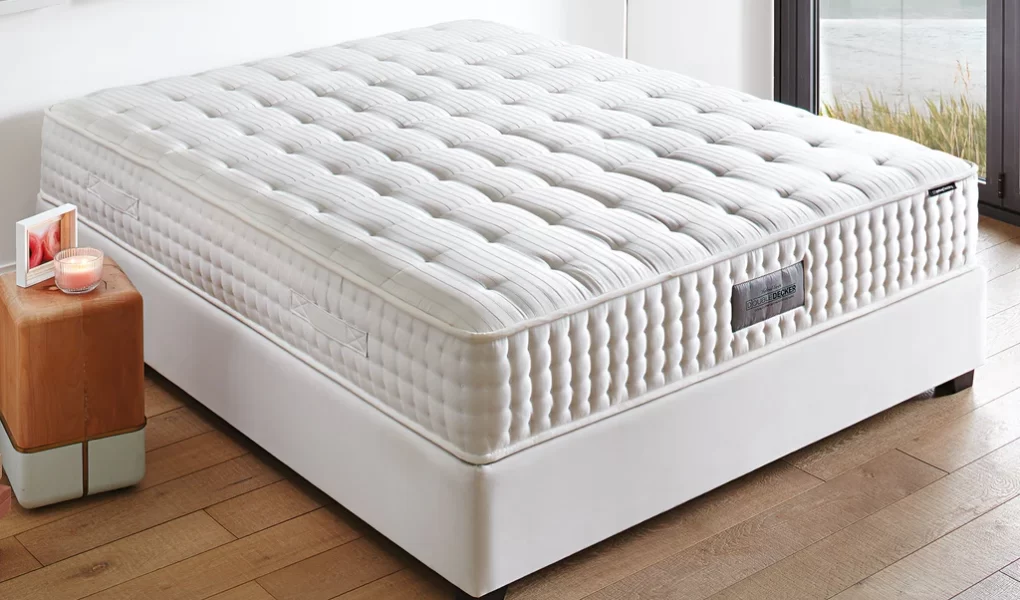Are you waking up feeling like you’ve been swallowed by your mattress? If there’s a noticeable dip in your bed, it might be time to take action. A sagging mattress not only disrupts your sleep but can also lead to back pain and discomfort. In this guide, we’ll explore the causes of a dip in a mattress, why fixing it is essential for your health, and practical DIY and professional solutions to restore your bed’s support. Let’s dive in and learn how to bid farewell to those unwanted sinkholes!
What causes a dip in a mattress?

Over time, a mattress can develop dips due to regular wear and tear. One common culprit is the compression of materials like foam or springs from constant use. As you sleep on the same spot night after night, these materials start to break down and lose their original shape, leading to sagging areas.
This could be due to sleeping habits, sitting on the edge of the bed frequently, or even jumping on the bed – all activities that put extra pressure on certain parts of the mattress and contribute to its deterioration.
Why is it important to fix a dip in the mattress?
We spend about one-third of our lives sleeping, so it’s crucial to ensure that our mattresses provide proper support. A dip in a mattress can lead to poor spinal alignment, causing discomfort and potential long-term health issues.
When a mattress develops a dip, it often means that the materials inside have broken down unevenly over time. This can result in an uneven sleeping surface, leading to pressure points on the body and disrupted sleep. Don’t worry, there are DIY methods to fix that annoying dip and get your bed back in shape. One simple solution is to rotate your mattress regularly. By flipping it over or switching the head and foot ends, you can help distribute the wear more evenly. If rotating doesn’t do the trick, try adding some extra support. Placing a piece of plywood between the mattress and box spring can provide reinforcement where it’s needed most.
Professional methods to fix a dip in a mattress
Professional methods to fix a dip in a mattress involve more advanced techniques that may require the expertise of professionals. One option is mattress flipping or rotating, which can help distribute weight evenly and reduce pressure on specific areas. In some cases, professional restoration services can be hired to repair deep indentations or sagging spots in the mattress. These experts have the knowledge and tools needed to restore your mattress back to its original shape and provide long-lasting results. Consulting with a reputable mattress manufacturer or retailer can also lead you to professional solutions tailored specifically for your type of mattress and its unique needs. investing in professional methods for fixing a dip in your mattress can prolong its lifespan and improve your overall sleep quality.
How to prevent dips from happening in the future
To prevent dips from forming in your mattress, regularly rotate it every three to six months. This simple practice helps distribute weight evenly and prevents excessive wear on one side. consider using a mattress protector to shield your bed from spills, stains, and moisture that can weaken its structure over time. Investing in a high-quality mattress with durable materials can also help maintain its shape and support. Be mindful of the weight limit recommended for your specific mattress to avoid putting too much pressure on it. Avoid jumping or standing on your bed as these activities can cause unnecessary strain. Be cautious when moving or transporting your mattress to prevent damage that could lead to dips. Handle it carefully and use proper techniques such as supporting it evenly while lifting.
Importance of regular maintenance for mattresses
A well-maintained mattress not only provides a good night’s sleep but also ensures longevity. Regular maintenance is essential to prevent issues such as dips and sagging. By rotating and flipping your mattress every few months, you can distribute the wear more evenly, extending its lifespan. Vacuuming your mattress regularly helps remove dust mites, dead skin cells, and other allergens that can affect your health. Using a mattress protector can also shield it from spills, stains, and moisture damage. Proper maintenance not only improves the comfort of your bed but also contributes to better hygiene in your sleeping environment. It’s recommended to follow the manufacturer’s guidelines for cleaning and care to avoid voiding any warranties.
Conclusion
Dips in mattresses can disrupt your sleep quality and lead to discomfort over time. By understanding the causes of dips, employing DIY methods, or seeking professional help when needed, you can effectively fix the issue.




